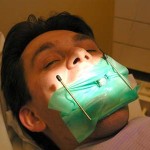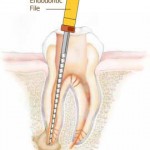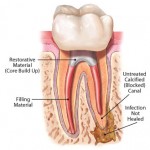 What do you expect when your dentist tells you that you have to undergo root canal treatment in order to save your tooth? Read here to find out when do you need root canal treatment. Continue reading
What do you expect when your dentist tells you that you have to undergo root canal treatment in order to save your tooth? Read here to find out when do you need root canal treatment. Continue reading
 What do you expect when your dentist tells you that you have to undergo root canal treatment in order to save your tooth? Read here to find out when do you need root canal treatment. Continue reading
What do you expect when your dentist tells you that you have to undergo root canal treatment in order to save your tooth? Read here to find out when do you need root canal treatment. Continue reading
A nor mal tooth will be symptom free and respond normally to pulp vitality test ( a test where the dentist applies small amount of electric current and you will feel a sharp pain if your tooth is alive) Continue reading
mal tooth will be symptom free and respond normally to pulp vitality test ( a test where the dentist applies small amount of electric current and you will feel a sharp pain if your tooth is alive) Continue reading
Root canal treatment can be avoided and some other alternative procedures can be done to maintain pulp vitality if:
(1)Â Â Â The pulp should have symptoms of reversible pulpitis ( application of hot, cold stimulus will cause sharp pain for 10-15 seconds but resolves upon removal)
(2)   No periradicular disease is shown in radiograph ( no radiolucency/transparency around the roots)
(3)Â Â Â Tooth of interest should respond to pulp testing (to test for whether your tooth is still alive)
A tooth consists of enamel, dentine, cementum and pulp. The pulp is a living tissue, inhabitated by nerve tissues, blood vessels and cells responsible for tooth formation and repair. Root canal therapy /treatment (endodontic therapy) involves removal of these structure which have been contaminated by bacteria and damaged permanently. The subsequent hollow space is cleaned, shaped and decontaminated using files and irrigants. The decontaminated space is then filled with inert filling material. After root canal therapy, the tooth will be ‘dead’ or non vital because it contains no living tissues. Continue reading
What is a  dental filling?
A tooth consists of enamel,dentine, pulp and cementum. Enamel is the outermost layer which forms the crown of a tooth. Tooth surface is covered by a bacterial biofilm,known as plaque. The bacteria metabolizes sugar and releases acid which destroys the enamel. This process is called decay or dental caries. When oral hygiene is inadequate, dental decay progresses into the dentine layer and in later stage, into the pulp. Decayed tooth is weak and brittle, thus it becomes soft, forming what is called cavity. A tooth damaged by decay needs to be filled to restore its normal function, shape and strength. Continue reading
Teeth have 3 layers namely enamel, dentine and pulp. A dentist deals with almost all kinds of dental diseases. When dentists could not handle certain difficult tooth situation, they usually refer you to certain specialist. Specialist who deals with diseases of dental pulp and nerve is an endodontist (root canal specialist). Continue reading
Root canal treatment is a dental procedure commonly used to treat infected or necrotic teeth. It offers an alternative to having the troubled tooth extracted, provided that the root canal system is accessible with reasonable negotiation as close as practicable to the end of the root. The tooth also needs to have an adequate amount of remaining tooth structure and good surrounding bone support.
Teeth requires root canal when the pulp of the tooth has been pathologically involved through decay or periodontal infection such that the pulp is progressively dying or already dead. The pulp in this context refers to the nerve and blood vessel supply of the teeth, which provides sensation and nutrients to the teeth. When bacteria invades the root canal system, it slowly colonize the area to eventually infiltrate the whole canal and causing death of the pulp. Bacteria can still grow on dead pulpal tissue, allowing precipitation of more toxins and causing an infection, which can spread outside to the underlying jawbone and supporting tissues. Despite the nerve being dead, the surrounding tissues still possess neural innervation and this contribute to the pain perception when infection associated with a necrotic nerve is involved. Continue reading
When infection damages the nerves inside the teeth, the symptoms are easy to notice and often painful. But that’s a good thing, because untreated nerve damage can lead to severe pain and even tooth loss. Dental surgeons can fix the problem before it becomes serious, so knowing when you have nerve damage can help you avoid its complications.
The oral cavity is made up of an average of 32 to 36 teeth. Each tooth has its own function: grinding, masticating, cutting, shearing, and so on. The tooth nerve is called and referred to as the dental pulp. It is a complex organ composed of connective tissues, blood vessels, and nerve axons. It is pinkish in color and soft in nature. Its original function is in the development of and formation of the teeth themselves. These nerves are relatively large at a young age, but they slowly shrink and become narrow over the years of adult life. They serve the purpose to keep the teeth hydrated and allow the dentin to retain a certain amount of elasticity. It lies within the tooth and extends from the crown to the tip of the root in the jaw bone.
Dental infections commonly arise from a tooth problem but can also be related to the surrounding periodontium which are supporting structures of the teeth. Keeping the periodontal structures aside, there are many reasons as to how a tooth can cause dental infections. Dental infections should not be underestimated as it can affect the rest of the head and also the neck region, leading to complications, which if left untreated, is potentially life threatening. There has been many cases demonstrated worldwide where dental infections that were not managed properly has lead to death, hence they should be taken seriously. Dental infections are very easily manageable when they are well localised and it is only until when they are allowed to spread through to other structures that a serious problem can arise. It is of utmost importance at any sign or symptom of dental infection, it is checked out by a competent dentist. And in the case of root canal related dental infections, the offending tooth is identified. Continue reading
 What is Root Canal Retreatment?
What is Root Canal Retreatment?Root canal retreatment, also known as endodontic nonsurgical retreatment is a procedure that is carried out on a tooth that previously had root canal treatment. Because of the complexity of the procedure, it is usually done by an endodontist. There are several reasons why a previously root canal treated tooth can fail. Continue reading